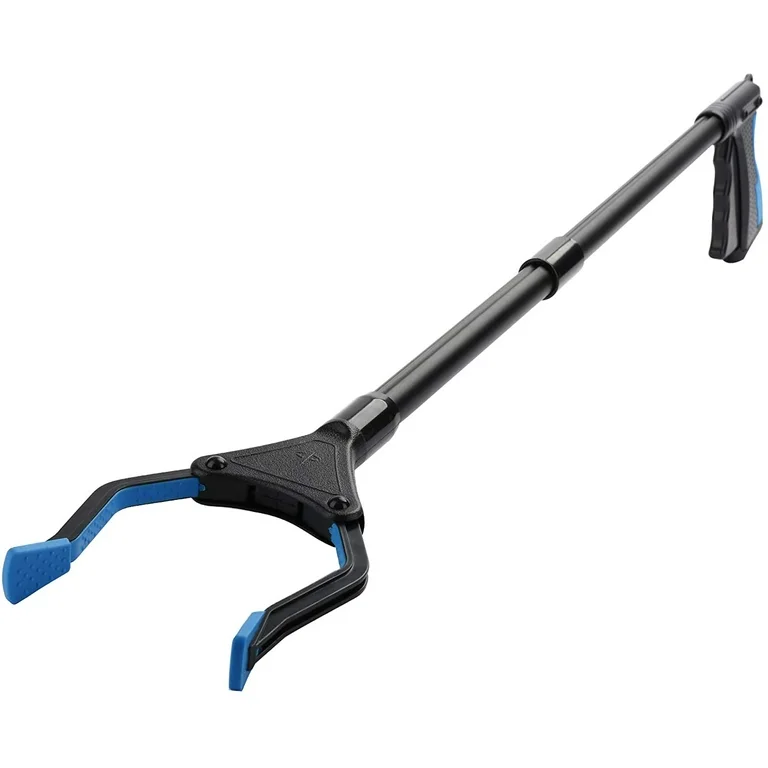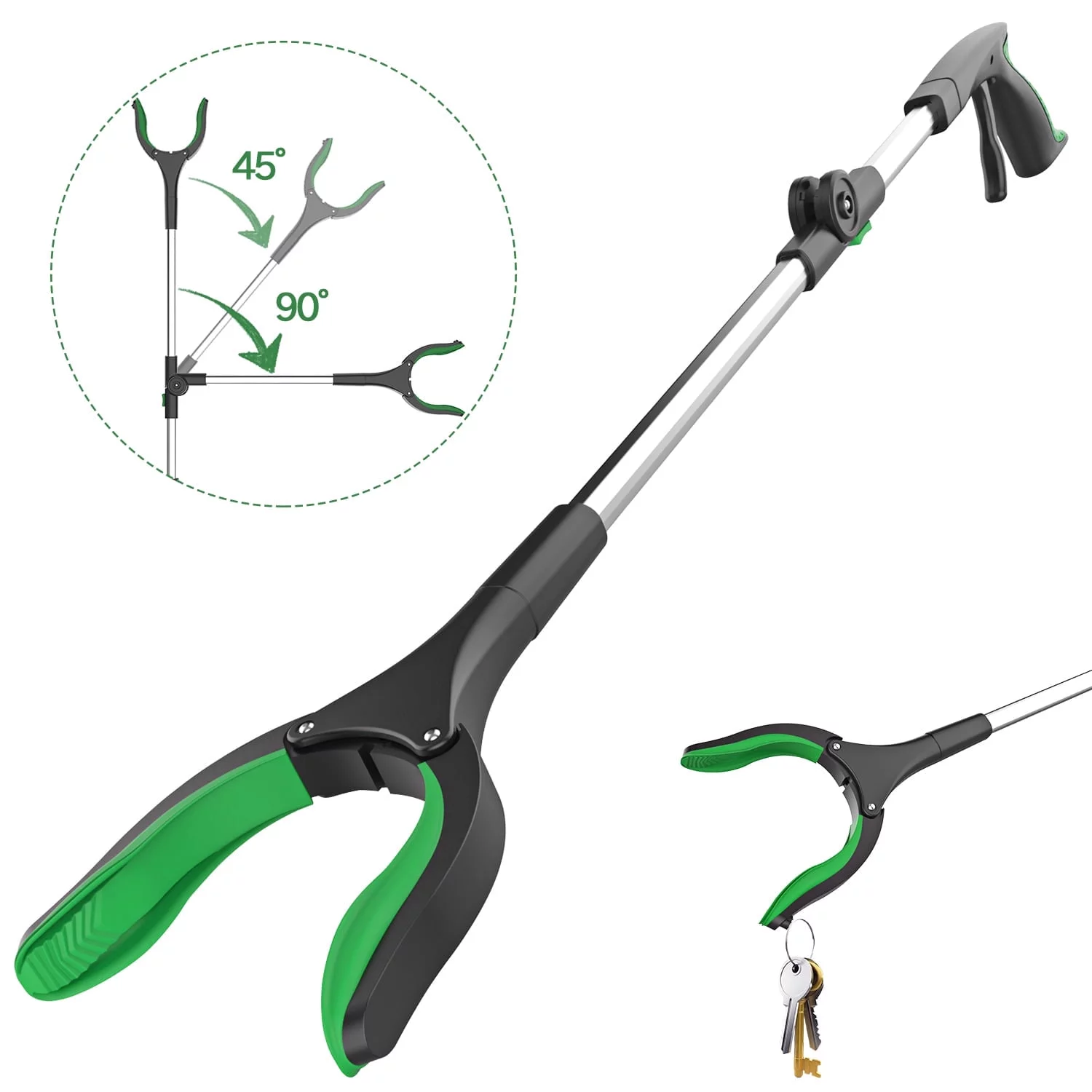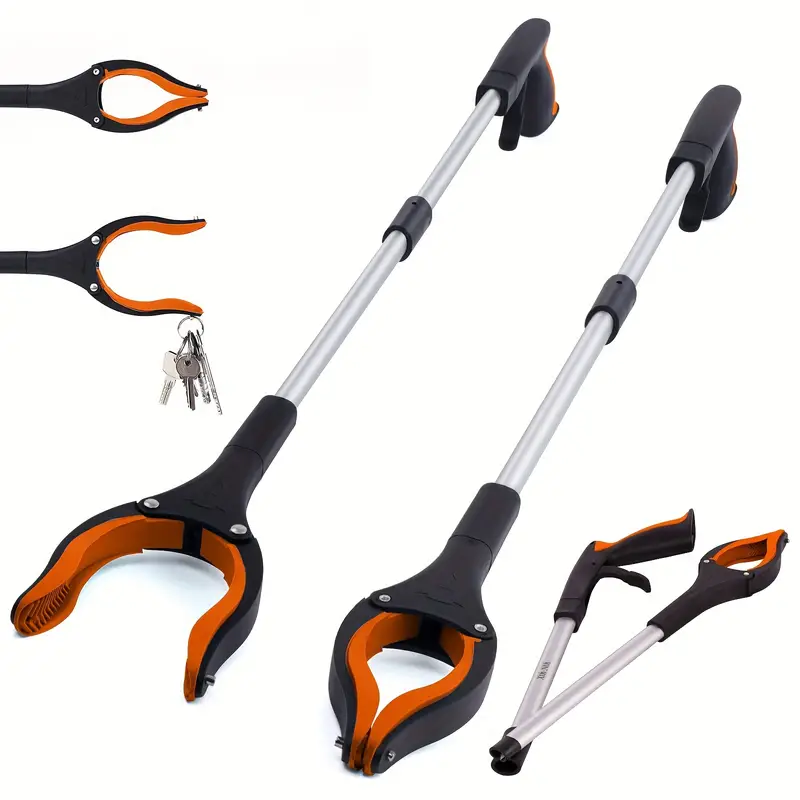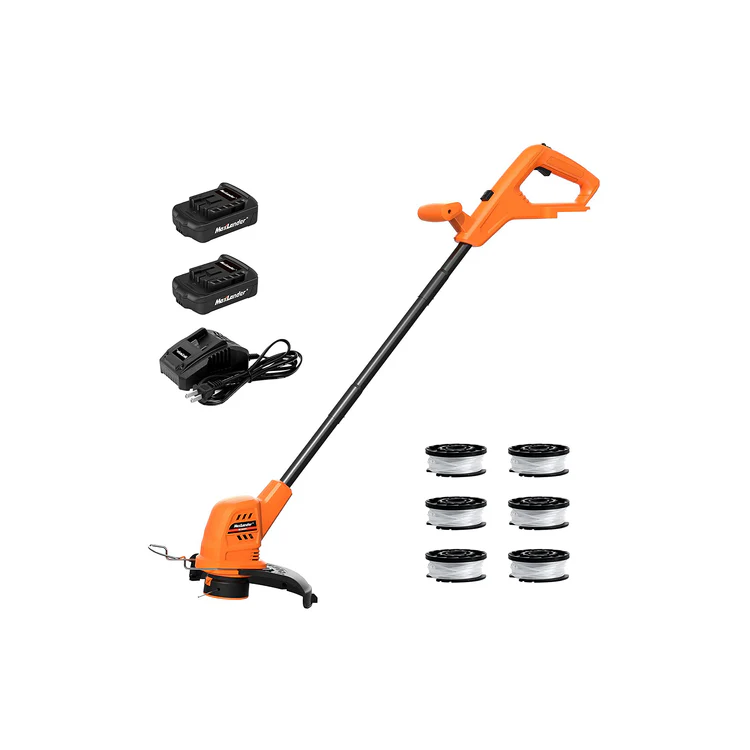
Unleashing the Power of Claw Grabber Tool
Mastering the Art of Reach: Unleashing the Power of Claw Grabber Tools
In the vast world of hand tools, the claw grabber tool stands out as a versatile and indispensable device that extends human reach and capabilities. These ingenious tools, also known as pick-up tools, grabber tools. Reacher-grabbers, have revolutionized how people interact with objects beyond their immediate grasp. From assisting individuals with limited mobility to enhancing efficiency in various industries, claw grabber tools have proven their worth time and time again. This comprehensive guide delves into the world of claw grabber tools, exploring their design, applications, benefits, and the transformative impact they have on daily life and professional settings.
The Evolution of Reach: A Brief History of Claw Grabber Tools
The concept of extending human reach dates back centuries, with early iterations of grabber tools appearing in various forms throughout history. Ancient civilizations used simple stick-like tools to retrieve items from heights or depths, laying the groundwork for more sophisticated designs. The modern claw grabber tool, however, emerged in the mid-20th century as a response to the needs of individuals with mobility issues.
Inventors and engineers recognized the potential for a device that could safely and effectively extend reach without requiring significant physical exertion. Over the decades, claw grabber tools have undergone numerous refinements, incorporating advanced materials, ergonomic designs, and innovative mechanisms to enhance their functionality and ease of use. Today, these tools represent the culmination of years of development, offering unparalleled reach and gripping capabilities to users across various domains.
Anatomy of a Claw Grabber: Understanding the Design
At its core, a claw grabber tool consists of several key components that work in harmony to extend reach and provide a secure grip. The handle, typically designed for comfort and control, serves as the user interface. It often incorporates a trigger mechanism that activates the grabbing action. The shaft, which extends from the handle, determines the tool’s reach and can vary in length depending on the specific model and intended use. At the end of the shaft, the grabbing mechanism features opposing jaws or claws that open and close to grasp objects.
These jaws may be lined with rubber or silicone to enhance grip and prevent damage to delicate items. Some advanced models incorporate additional features such as rotating heads. LED lights for improved visibility, or magnetic tips for retrieving metal objects. The materials used in claw grabber construction range from lightweight aluminum for everyday use to heavy-duty steel for industrial applications, ensuring durability and reliability across various scenarios.
Applications Across Industries: From Home to Heavy-Duty
The versatility of claw grabber tools has led to their adoption across a wide range of industries and applications. In healthcare settings, these tools prove invaluable for patients with limited mobility, enabling them to retrieve objects, manage daily tasks, and maintain a degree of independence. Caregivers also benefit from claw grabbers, using them to assist patients without risking injury from overreaching or bending. In the industrial sector, claw grabber tools find extensive use in maintenance and repair operations, allowing technicians to access tight spaces or retrieve dropped tools in machinery.
The automotive industry employs specialized grabber tools for intricate engine work and parts retrieval. In retail and warehouse environments, long-reach grabbers facilitate stock management and retrieval from high shelves, improving efficiency and workplace safety. Even in scientific and research settings, precision grabber tools aid in handling sensitive specimens or manipulating objects in controlled environments. The adaptability of claw grabber tools continues to expand their reach into new fields. Constantly finding innovative applications that enhance human capabilities.
Enhancing Daily Life: Claw Grabbers in the Home
In residential settings, claw grabber tools have become indispensable aids that simplify numerous tasks and promote independence. For individuals with mobility issues, these tools transform everyday activities into manageable feats. Reaching high shelves, picking up items from the floor, or retrieving objects from behind furniture becomes effortless with a well-designed grabber. Gardening enthusiasts embrace long-reach grabbers to tend to plants in hanging baskets or remove debris from gutters without the need for ladders.
In the kitchen, grabber tools assist in reaching items stored in high cabinets or retrieving utensils that have fallen behind appliances. Pet owners find these tools helpful for picking up toys or cleaning up outdoor areas without excessive bending. Even for individuals without mobility limitations, claw grabbers offer convenience and safety. Reducing the risk of falls or strains from overreaching. The integration of claw grabber tools into daily life showcases their ability to enhance comfort, safety, and efficiency in the home environment.
Ergonomics and Safety: Designing for User Well-being
The design of claw grabber tools places a strong emphasis on ergonomics and safety. Recognizing the diverse needs of users and the importance of preventing strain or injury. Handles are crafted to fit comfortably in hand, often featuring contoured grips or cushioned materials to reduce fatigue during extended use. The weight distribution of the tool is carefully considered to minimize strain on the wrist and arm, particularly in longer models. Trigger mechanisms are designed for ease of operation, requiring minimal force to activate the gripping action.
Many claw grabbers incorporate locking mechanisms that maintain a grip on objects without constant pressure from the user, further reducing hand fatigue. Safety features such as non-slip grips and secure locking systems prevent accidental release of held items. For users with limited hand strength or dexterity, models with lever-action handles or power-assisted gripping mechanisms offer enhanced usability. By prioritizing ergonomics and safety in their design. Claw grabber tools not only extend reach but also promote user well-being and confidence in their capabilities.

Innovations in Claw Grabber Technology: Pushing the Boundaries
As technology advances, claw grabber tools continue to evolve, incorporating innovative features that expand their functionality and ease of use. Smart grabbers equipped with sensors and microprocessors can adjust gripping force based on the weight and fragility of objects. Ensuring secure holds without damage. Some models now feature built-in cameras and displays, allowing users to see into tight spaces or around corners as they maneuver the tool. Lightweight, foldable designs improve portability, making it easier for users to carry grabbers wherever they go.
Manufacturers are exploring the use of advanced materials such as carbon fiber to create ultra-lightweight yet durable tools capable of lifting heavier loads. In industrial settings, robotic claw grabbers controlled by remote operators push the boundaries of reach and precision. Enabling work in hazardous or inaccessible environments. The integration of augmented reality (AR) technology with grabber tools opens up new possibilities for training, maintenance. These ongoing innovations underscore the potential for claw grabber tools to continue revolutionizing how humans interact with their environment and extend their capabilities.
Choosing the Right Claw Grabber: Factors to Consider
Selecting the ideal claw grabber tool requires careful consideration of several factors to ensure it meets specific needs and preferences. The intended use plays a crucial role in determining the appropriate features and specifications. For everyday household use, a lightweight, general-purpose grabber with a reach of 2-3 feet often suffices.
The weight capacity of the tool should align with the types of objects it will handle. Ranging from light items like paper to heavier household goods. Durability becomes paramount for industrial or outdoor applications, necessitating tools made from robust materials capable of withstanding harsh conditions. The ergonomics of the handle and trigger mechanism should suit the user’s hand size and strength, ensuring comfortable operation. For users who plan to carry the tool frequently, factors such as weight and foldability gain importance. By carefully evaluating these aspects and matching them to individual requirements. Users can select a claw grabber tool that enhances their capabilities and improves their quality of life or work efficiency.

Maintenance and Care: Ensuring Longevity and Performance
Proper maintenance and care of claw grabber tools are essential for ensuring their longevity and optimal performance. Regular cleaning prevents the buildup of dirt and debris that could interfere with the gripping mechanism or trigger action. For tools used in outdoor or dirty environments, a thorough cleaning after each use helps maintain functionality. Lubricating moving parts, such as joints and pivots. With a suitable oil or silicone spray keeps the tool operating smoothly and prevents rust or corrosion.
Users should periodically inspect the grabber for signs of wear or damage. Paying particular attention to the gripping surfaces and any rubber or silicone components that may degrade over time. Replacing worn parts promptly helps maintain the tool’s effectiveness and safety. Proper storage in a dry, cool place protects the grabber from environmental factors that could cause deterioration. For folding models, avoiding excessive stress on hinges and joints during storage preserves their integrity. By implementing these maintenance practices. Users can extend the life of their claw grabber tools and ensure they remain reliable aids for years to come.
The Future of Reach: Claw Grabbers in Tomorrow’s World
As society continues to evolve, the role of claw grabber tools is set to expand. Driven by technological advancements and changing human needs. The aging global population will likely spur further innovations in assistive grabber technologies. With a focus on enhancing independence and quality of life for seniors and individuals with disabilities. Integration with smart home systems could lead to voice-activated or app-controlled grabbers that respond to user commands, further extending accessibility.
The principles behind claw grabber tools may even find applications in space exploration. Aiding astronauts in zero-gravity environments or facilitating the collection of samples on distant planets. As environmental concerns grow, eco-friendly materials and sustainable manufacturing processes will likely shape the production of future grabber tools. The continued evolution of claw grabber technology underscores its enduring relevance and potential to shape how humans interact with their environment. Promising a future where the limitations of reach become increasingly obsolete.



